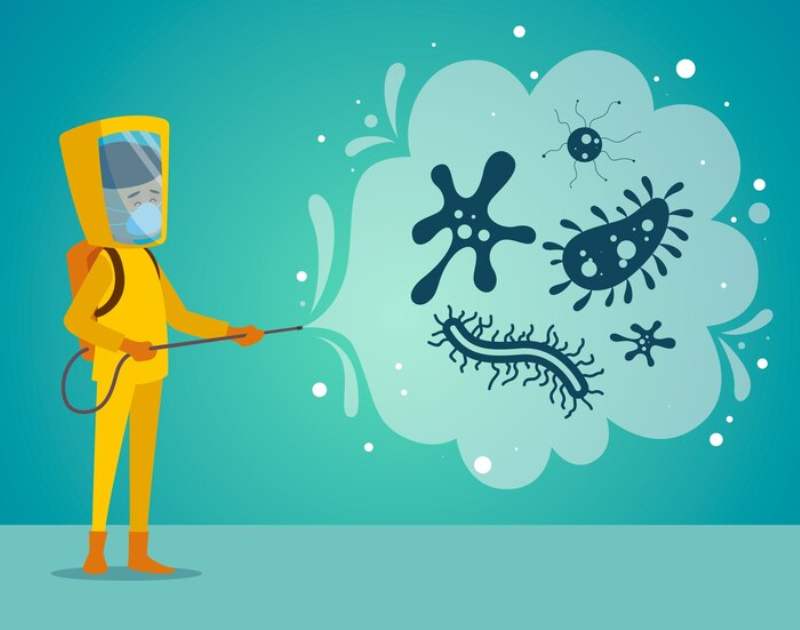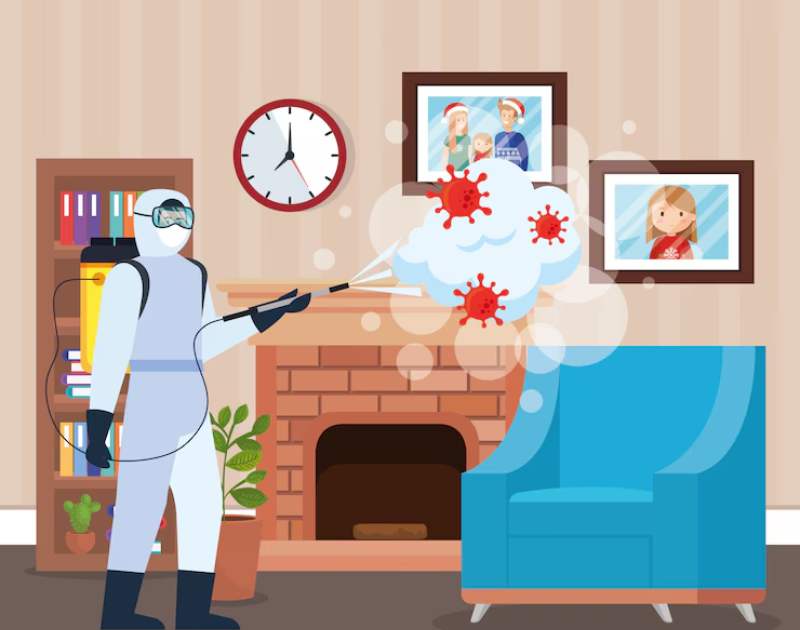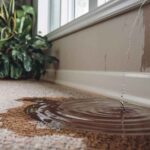Mold, a silent and often overlooked menace, can have far-reaching consequences on your health and well-being.
While it thrives in damp, dark environments, its spores can spread insidiously, emitting a pungent, musty odor that lingers in the air.
This fungal invader not only assaults your senses but can also release toxic substances, leading to a range of concerning symptoms.
In this comprehensive guide, we unveil the 10 warning signs of mold toxicity that you simply cannot ignore, empowering you to take proactive steps towards safeguarding your home and your family’s health.
10 Warning Signs of Mold Toxicity
Mold toxicity can manifest in various ways, and recognizing these signs is crucial for taking timely action.
From cognitive impairments to respiratory distress, these warning signals serve as red flags, alerting you to the potential presence of mold and the need for immediate intervention.
Cognitive Issues
Exposure to mold toxicity can have a profound impact on your cognitive function. Brain fog, anxiety, and poor memory are common complaints among individuals affected by mold toxicity.
As the toxic spores infiltrate the body, they can disrupt the delicate balance of neurotransmitters, leading to difficulties in concentration, recall, and overall mental clarity.
Fatigue
Mold toxicity can zap your energy levels, leaving you feeling perpetually tired and drained.
Fatigue, dizziness, and a general sense of weakness may become constant companions, hindering your ability to perform daily tasks.
This lethargy can be attributed to the body’s struggle to combat the toxic effects of mold, which can impair oxygen intake and disrupt vital bodily functions.
Headaches and Migraines
Frequent and severe headaches or migraines can be a telltale sign of mold toxicity. As the toxic spores circulate through the body, they can trigger inflammation and irritation, leading to throbbing headaches or debilitating migraines.
If you notice an increase in the frequency or intensity of these headaches, it’s essential to investigate the possibility of mold exposure.
Skin Issues
Mold toxicity can manifest through various skin conditions, such as itching, hives, and rashes.
These reactions can be the body’s way of signaling an allergic response or inflammatory process triggered by the toxic mold spores.
If you experience persistent or unexplained skin issues, consulting a dermatologist and checking for mold in your environment is crucial.
Respiratory Issues
One of the most severe and concerning signs of mold toxicity is respiratory distress. Coughing, wheezing, shortness of breath, and even asthma attacks can be exacerbated by mold exposure.
As the toxic spores infiltrate the respiratory system, they can cause inflammation and irritation, leading to breathing difficulties and potentially life-threatening situations.
Digestive Issues
Mold toxicity can wreak havoc on your digestive system, causing nausea, vomiting, abdominal pain, diarrhea, and even intestinal bleeding in severe cases.
These symptoms may arise from the ingestion of mold-contaminated food or the systemic effects of mold toxicity on the body.
It’s crucial to inspect areas where food and spices are stored and seek medical attention if these issues persist.
Joint Pain and Muscle Aches
Chronic joint pain, muscle aches, and stiffness can be indicators of mold toxicity. In some cases, the toxic effects of mold can lead to fungal arthritis or infections, causing significant discomfort and mobility issues.
Additionally, numbness or tingling sensations in the body may also be experienced, necessitating prompt medical evaluation.
Mood Changes
Mold toxicity can impact your emotional well-being, leading to mood changes such as depression, anxiety, and fluctuations in mental health.
The toxic spores can interfere with the brain’s neurotransmitter functions, disrupting the production of chemicals like dopamine and serotonin, which regulate mood and emotional stability.
Insomnia or disrupted sleep patterns may also accompany these mood changes, further exacerbating the problem.
Allergies
One of the most common signs of mold toxicity is the development or exacerbation of allergic reactions.
Symptoms like an itchy throat, watery eyes, congestion, runny nose, and eczema can all be indicative of mold exposure.
If you have a family history of allergies, mold allergies can be particularly severe and require immediate attention.
Sensitivity in Senses
Mold exposure can heighten sensitivity to certain stimuli, such as light and sound. You may experience discomfort or increased sensitivity to light exposure or loud noises, leading to further complications like mood changes and sleep disturbances.
Paying attention to these subtle shifts in sensory perception can help identify the underlying cause.
Ways To Prevent Mold Toxicity

Now that you’re armed with knowledge about the 10 warning signs of mold toxicity, it’s crucial to take proactive measures to prevent its growth and spread. Here are some effective strategies to keep your home and environment mold-free:
- Regular Inspections: Conduct thorough inspections of your home, paying close attention to damp areas, such as bathrooms, basements, and attics. Look for signs of moisture buildup, water leaks, or discoloration on walls and ceilings.
- Proper Ventilation: Ensure adequate ventilation throughout your home, especially in areas prone to moisture accumulation. Use exhaust fans, dehumidifiers, and open windows regularly to promote airflow and prevent mold growth.
- Humidity Control: Maintain appropriate humidity levels between 30% and 50% in your indoor environment. Invest in a reliable hygrometer to monitor humidity levels and adjust accordingly.
- Prompt Remediation: If you detect mold growth, act quickly to address the issue. Small areas can be cleaned with a solution of detergent and water, but larger infestations may require professional mold remediation services.
- Address Water Damage: Promptly address any water damage or leaks to prevent the ideal conditions for mold growth. Repair leaky pipes, fix roof leaks, and dry out any affected areas as soon as possible.
- Proper Storage: Store items, especially those made of paper or fabric, in dry and well-ventilated areas to prevent mold growth. Avoid storing materials in damp basements or attics.
- Regular Cleaning: Implement a consistent cleaning routine, paying special attention to areas prone to moisture buildup. Use mold-resistant products and ensure proper drying after cleaning.
- Professional Assistance: In cases of severe or widespread mold infestation, don’t hesitate to seek professional help. Certified mold remediation specialists have the expertise and equipment to safely and effectively address the issue.
By being proactive and vigilant, you can effectively prevent mold toxicity and safeguard the health and well-being of you and your loved ones.
Also Read This Post:
Earth Breeze Unscented Laundry Detergent Sheets Review 2023
FAQ’s
Can mold toxicity cause long-term health issues?
Yes, prolonged exposure to mold toxicity can lead to chronic health problems and exacerbate existing conditions.
Is it safe to clean mold myself, or should I hire professionals?
You can clean small, isolated areas of mold growth by following proper safety precautions. However, for larger infestations, it’s advisable to hire professional mold remediation services.
How can I determine if I have a mold allergy?
Consult an allergist for appropriate testing and diagnosis if you suspect a mold allergy based on your symptoms.
Can mold toxicity affect pets?
Yes, pets can also experience adverse health effects from mold toxicity, including respiratory issues, skin problems, and lethargy.
How long does it take for mold toxicity symptoms to subside after exposure?
The duration of symptoms can vary depending on the extent of exposure and individual health factors, but most people experience relief within a few weeks after eliminating the mold source.
Final Thoughts
Mold toxicity is a serious issue that should not be ignored. The article “10 Warning Signs of Mold Toxicity You Shouldn’t Ignore” provides valuable information on recognizing the various symptoms associated with mold exposure.
From cognitive impairments to respiratory problems, skin issues to digestive distress, these warning signs serve as important indicators of potential mold toxicity.
It is crucial to address mold growth promptly and take proactive measures to prevent its spread.
Regular inspections, proper ventilation, humidity control, and prompt remediation are essential steps in maintaining a safe and healthy environment for you and your family.
Remember, prevention is the key to avoiding the harmful effects of mold toxicity. By being vigilant and taking the necessary precautions, you can safeguard your well-being and ensure a mold-free living space.
Don’t hesitate to seek professional assistance if needed, as addressing mold infestations promptly is crucial for maintaining a healthy and comfortable home environment.







